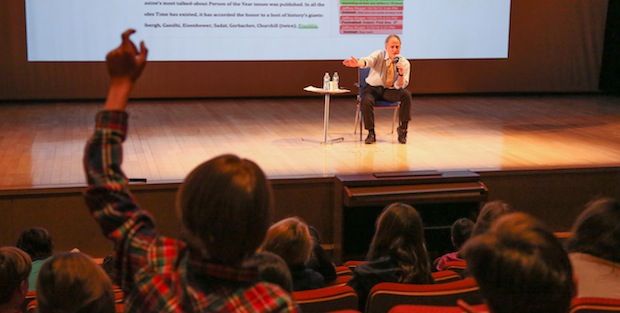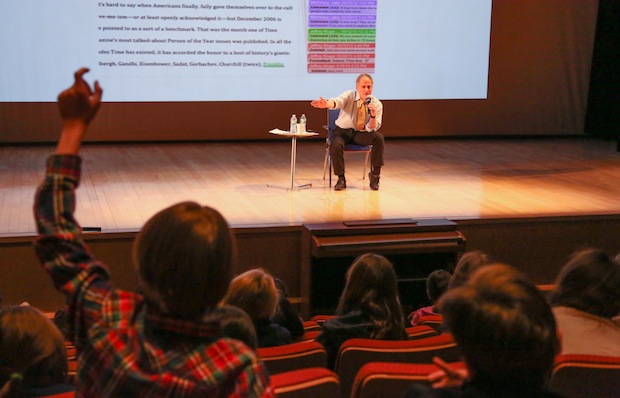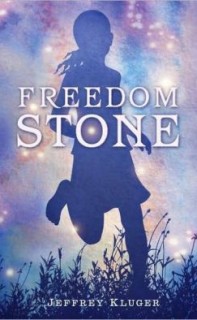Jeffrey Kluger took questions from students about his presentation “The Art of Storytelling”.
On Friday, January 17th, 2014, an author named Jeffrey Kluger came to our school. He came to tell the CM2 students about storytelling. He is an editor for TIME magazine and a parent. He is also a successful author of fiction and non-fiction books. He has written more than five books including Lost Moon (now known as Apollo 13) and Freedom Stone. He has also written thousands of articles for several magazines throughout his career.
Mr. Kluger told us how to write a story whether it be non-fiction or fiction. He taught us that ideas for stories do not come in a snap. They come with time and patience. One day you might have a dream that will turn into a prize-winning book. Or your book might be a true story. “In your book,” Mr. Kluger said, “you will probably have characters that you have something in common with.” But most importantly you want your reader to want to turn the page.
The process of writing a story is long and complicated. First you need to brainstorm. Mr. Kluger got ideas from his dreams; for example, Nacky Patcher & the Curse of the Dry-Land Boats, Mr. Kluger’s first book for children, is based on a simple dream he had. In his dream all his did was see a lake, go to the other side of a mountain to look at the view, and come back to find a tremendous shipwreck in the lake. Who brought it there? How did it get there? Are there any survivors? He asked himself all of those questions and answered them in his book.
You want your reader to want to turn that page.
The second part of making a book is to research about your subject and make a realistic storyline. To make Apollo 13 Mr. Kluger had to do a ton of research. Even after the research he had to ask Jim Lovell, the commander for the Apollo 13 mission, to help him. Then you have to, based on your storyline, write your book. Writing can get very depressing, sometimes people quit because they cannot find any more interesting details to write.
Mr. Kluger admits it’s one of the most challenging things for an author. When Jim Lovell helped him for Apollo 13, Mr. Kluger asked him for details that happened in the spaceship that would make the audience have feelings and emotions based on the action. For example, Mr. Kluger wrote about a hug that Jim gave to Fred Haise, another astronaut, when he was cold to show “the love” between them.
The last part of making a book is to go to the editors and publishers. Usually the three first times you try to make them like it, you’ll still have to change your story. Mr. Kluger said most of the time you have to cut paragraphs because they do not help the story or relate to the plot. Once the editors and publishers accept it, then you have to find a title for it.
This presentation gave a lot of students an idea of the role of being an author. The students were also very curious and asked numerous questions about the job. Mr. Kluger has made such good books that his first book turned into a very famous movie- Apollo 13! We thank Mr. Kluger for sharing his knowledge of storytelling and time with the CM2 students.
By Nina S and Julien C (CM2 Students)
About the Author :
After receiving her bachelor’s degree in childhood education, Veronica McGivney Park taught in primary schools in Costa Rica, Japan, and her hometown, St. Louis, Missouri. She came to New York to attend Columbia University’s Teachers College and earned a master’s degree in international educational development. She also earned a master of science in educational leadership from Hunter College, CUNY, in 2017. Veronica joined the Lycée in September 2005 as an elementary English teacher. Before leading the maternelle team, she was the chair of the English department, where she worked to integrate and harmonize best practices in American and French education. When she is not thinking about bilingual education, she enjoys spending time with her two daughters and husband in Brooklyn.




